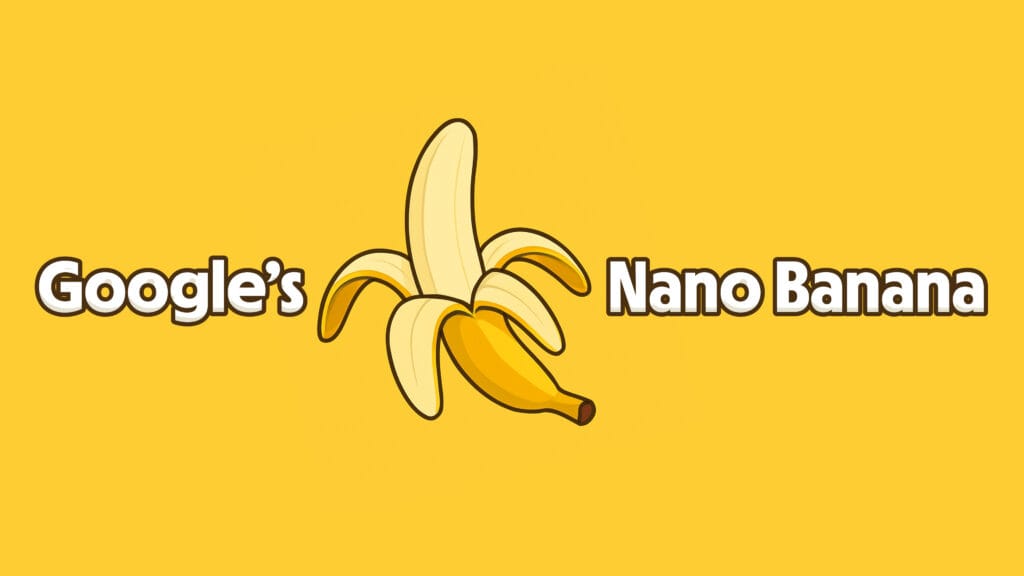Google’s Nano Banana: The New Standard in AI Image Editing

Google has launched a powerful new AI model inside its Gemini app with the unusual codename Nano Banana. Officially based on Gemini 2.5 Flash Image, this feature is reshaping how users think about photo editing. From speed and precision to identity consistency, Nano Banana has quickly captured attention from both casual users and professionals.
At Scalevise, we keep a close eye on emerging AI tools that reshape workflows. Nano Banana is more than a gimmick, it signals a shift in how AI integrates into daily tasks and professional projects.
Why Nano Banana Stands Out
- Lightning-fast editing: Images are processed in one to two seconds, compared to the 10–15 seconds common in other AI editors.
- Identity consistency: Whether modifying portraits or generating characters, Nano Banana preserves facial features and identity across multiple edits.
- Context-aware modifications: Users can apply step-by-step edits, such as changing clothes, backgrounds, or accessories, while keeping the subject intact.
- Seamless image blending: The model merges two separate photos into a single coherent scene without breaking visual flow.
This balance of speed, accuracy, and reliability positions Nano Banana ahead of competitors. For businesses, it opens the door to scalable image creation workflows a topic we explore frequently in our AI and automation resources.
Adoption and Popularity
Nano Banana isn’t just a technical achievement; it’s already proving a cultural phenomenon.
- Viral “figurine prompt”: Users convert selfies or pet photos into collectible figurine-style visuals, sparking massive social sharing.
- 10+ million new Gemini users: Within days of launch, Nano Banana helped drive a surge of adoption, alongside more than 200 million edited images.
- Regional growth: Countries like the Philippines led early adoption, with millions of images processed in just a few days.
- Cross-platform access: Available through the Gemini app on web and mobile, in both free and paid versions.
For businesses, this kind of traction signals where customer expectations are heading. Fast, customizable, AI-powered visuals are no longer a luxury they are becoming baseline.
Practical Use Cases
| Sector | Application |
|---|---|
| E-commerce | Generate product images in different styles and colors, boosting conversions. |
| Marketing | Create campaign visuals and mock-ups in hours instead of days. |
| Gaming | Build thousands of unique NPC portraits at a fraction of traditional cost. |
| Architecture | Produce interior design visuals for clients without multiple revisions. |
| Education | Develop visual materials that explain complex topics more clearly. |
At Scalevise, we help teams integrate tools like these into workflows so they deliver tangible ROI rather than being just a novelty.
Ethical and Security Concerns
Like any powerful AI tool, Nano Banana introduces risk.
- Deepfake potential: Its ability to create near-perfect edits raises concerns about authenticity.
- Trust in visuals: Even experts trained in digital forensics may struggle to detect manipulations.
- Google’s response: Every image comes with a visible watermark and a hidden SynthID digital watermark that confirms AI origin.
- Misuse monitoring: Google warns that deceptive usage may result in account bans.
This aligns with broader challenges we address in our AI governance and compliance insights. Businesses need to balance adoption with safeguards to ensure credibility and compliance.
The Future of AI-Driven Image Editing
Nano Banana demonstrates three key trends for the future of AI image tools:
- Speed becomes the differentiator — users will not tolerate waiting when instant output is possible.
- Identity preservation matters — whether for brand consistency, avatars, or professional photography, AI tools must keep “you looking like you.”
- Ethical guardrails are non-negotiable — transparency, watermarking, and compliance frameworks must evolve in step with capabilities.
For high-growth teams, this isn’t just about creative play. It’s about building scalable, automated pipelines for content creation. That’s where AI workflows and automation at scale come in ensuring tools like Nano Banana can be operationalized across industries.
Conclusion
Google’s Nano Banana has quickly proven to be more than a quirky name. It represents a leap forward in speed, usability, and identity consistency for AI-powered photo editing. Yet its rise also demands vigilance around authenticity and misuse.
For businesses, the key is to recognize Nano Banana not just as a tool for individuals, but as a model of what the next generation of AI-powered workflows will look like. At Scalevise, we help organizations evaluate, adopt, and operationalize tools like this to stay ahead of the curve.
